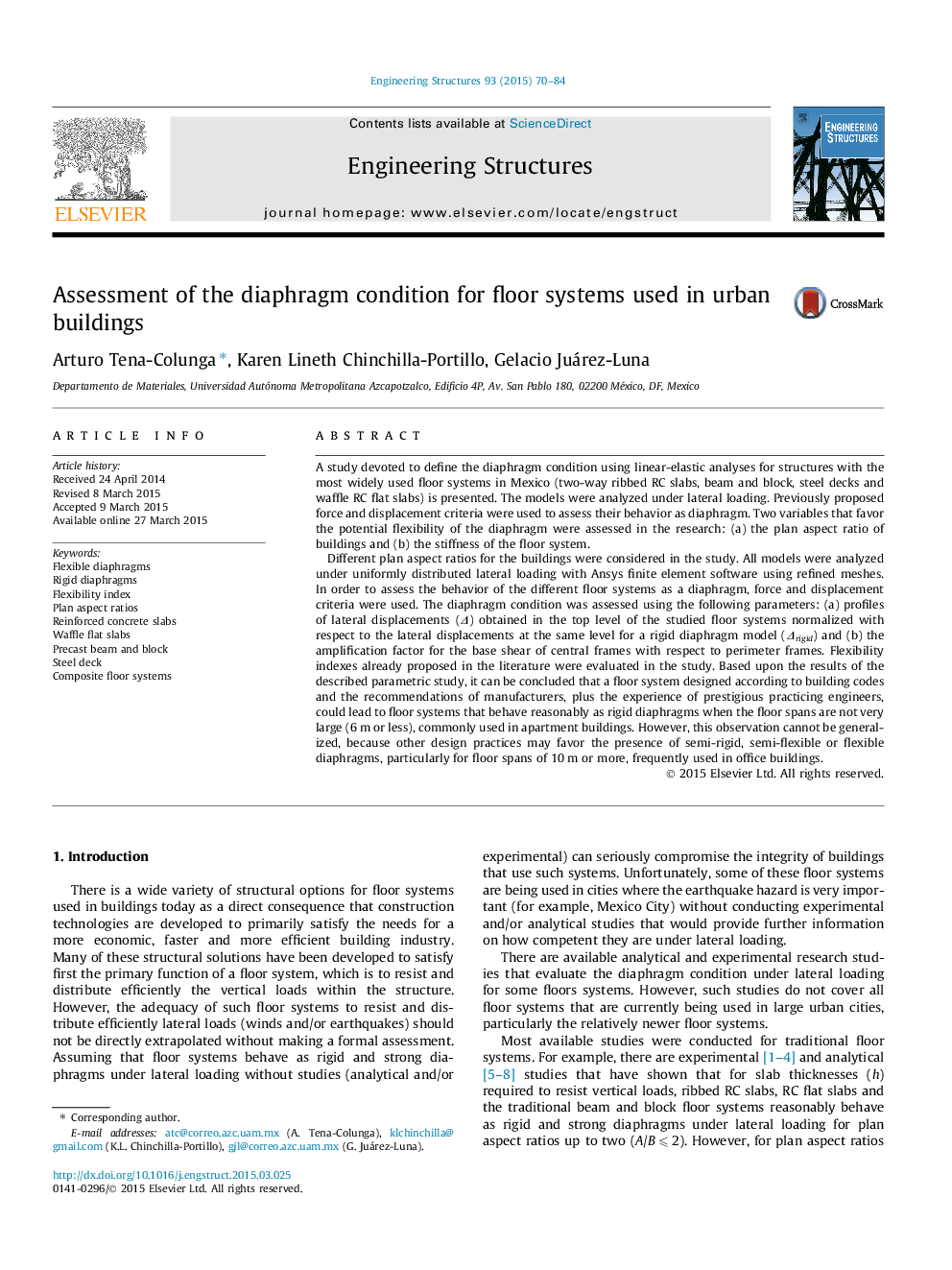| Article ID | Journal | Published Year | Pages | File Type |
|---|---|---|---|---|
| 266311 | Engineering Structures | 2015 | 15 Pages |
•The diaphragm condition for different building floors systems is assessed.•Plan aspect ratios A/B from 1 to 4.5 are considered in the study.•Isotropic and orthotropic material formulations were used in FE analyses.•Flexibility indexes already proposed in the literature were evaluated.•RC waffle flat slabs were found to be the most flexible floor system.
A study devoted to define the diaphragm condition using linear-elastic analyses for structures with the most widely used floor systems in Mexico (two-way ribbed RC slabs, beam and block, steel decks and waffle RC flat slabs) is presented. The models were analyzed under lateral loading. Previously proposed force and displacement criteria were used to assess their behavior as diaphragm. Two variables that favor the potential flexibility of the diaphragm were assessed in the research: (a) the plan aspect ratio of buildings and (b) the stiffness of the floor system.Different plan aspect ratios for the buildings were considered in the study. All models were analyzed under uniformly distributed lateral loading with Ansys finite element software using refined meshes. In order to assess the behavior of the different floor systems as a diaphragm, force and displacement criteria were used. The diaphragm condition was assessed using the following parameters: (a) profiles of lateral displacements (Δ) obtained in the top level of the studied floor systems normalized with respect to the lateral displacements at the same level for a rigid diaphragm model (Δrigid) and (b) the amplification factor for the base shear of central frames with respect to perimeter frames. Flexibility indexes already proposed in the literature were evaluated in the study. Based upon the results of the described parametric study, it can be concluded that a floor system designed according to building codes and the recommendations of manufacturers, plus the experience of prestigious practicing engineers, could lead to floor systems that behave reasonably as rigid diaphragms when the floor spans are not very large (6 m or less), commonly used in apartment buildings. However, this observation cannot be generalized, because other design practices may favor the presence of semi-rigid, semi-flexible or flexible diaphragms, particularly for floor spans of 10 m or more, frequently used in office buildings.
